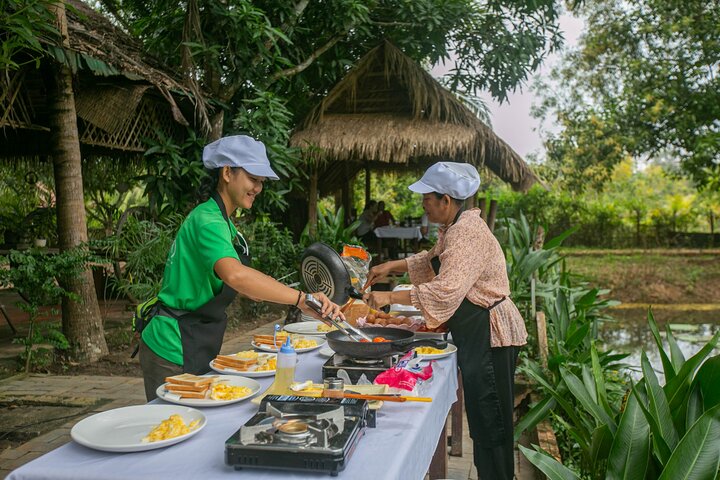Exploring the Mystical Temples of Banteay Srei and Beyond
Embark on a journey through the enchanting temples of Banteay Srei and the Grand Circle in Angkor Park. Discover the intricate carvings, mystical allure, and architectural brilliance that define Cambodia’s rich cultural heritage.
A Journey Through Time: The Enchanting Banteay Srei
As I embarked on my journey to the Banteay Srei, often referred to as the “Citadel of Women,” I was immediately struck by the intricate carvings that adorned the temple walls. Unlike other temples in the Angkor complex, Banteay Srei was not built by a king but by a Brahman of royal descent, dedicated to the Hindu god Shiva. The temple’s pink sandstone, which glows warmly under the Cambodian sun, is a testament to the artistry and devotion of its creators.
Walking through the temple, I felt a deep connection to the past, as if the walls themselves whispered stories of ancient rituals and spiritual teachings. The carvings, depicting scenes from Hindu mythology, were so detailed that they seemed to come alive. It was a humbling experience to witness such craftsmanship, a reminder of the rich cultural heritage that Cambodia holds.
The temple’s serene atmosphere allowed me to reflect on the importance of preserving these historical sites. As a cultural consultant, I often emphasize the significance of understanding and respecting the traditions of the places we visit. Banteay Srei is a perfect example of how history and spirituality intertwine, offering a glimpse into the soul of Cambodia.
The Mystical Allure of Preah Khan
Our next stop was Preah Khan, a temple complex that remains largely unrestored, allowing nature to reclaim its space. Named “Holy Sword” in Khmer, Preah Khan was built by King Jayavarman VII in honor of his victory against the Chams. The temple’s sprawling grounds, surrounded by a moat, create a sense of mystery and wonder.
As I wandered through the ruins, I was captivated by the way the trees and vegetation seemed to embrace the stone structures, creating a harmonious blend of nature and architecture. It was as if the temple was alive, breathing with the rhythm of the jungle. This unique fusion of man-made and natural beauty is what makes Preah Khan so enchanting.
The temple’s history is deeply intertwined with the region’s past, and exploring its corridors felt like stepping back in time. I was reminded of the resilience and ingenuity of the Khmer people, who built these magnificent structures with limited resources. Preah Khan is a testament to their enduring legacy, a place where history and nature coexist in perfect harmony.
The Grand Circle: A Tapestry of Temples
The final leg of our journey took us through the Grand Circle of Angkor Archaeological Park, a tapestry of temples that showcases the architectural brilliance of the Khmer Empire. From the East Mebon to Pre Rup, each temple tells its own story, offering a unique perspective on the spiritual and cultural life of ancient Cambodia.
The East Mebon, once an island temple, now stands amidst a dry reservoir, its towers rising majestically against the sky. Dedicated to the Hindu god Shiva, the temple honors the parents of King Rajendravarman, reflecting the deep familial ties that were central to Khmer society.
Pre Rup, with its stepped pyramid design, represents the sacred mountain Mount Meru, the center of the universe in Hindu mythology. Climbing to the top, I was rewarded with a breathtaking view of the surrounding landscape, a moment of tranquility and reflection.
This journey through the Grand Circle was a profound experience, one that deepened my appreciation for the cultural richness of Cambodia. As I stood amidst these ancient ruins, I felt a sense of gratitude for the opportunity to witness such beauty and history. It is a reminder of the importance of preserving these treasures for future generations, so that they too may be inspired by the stories and traditions of the past.











































